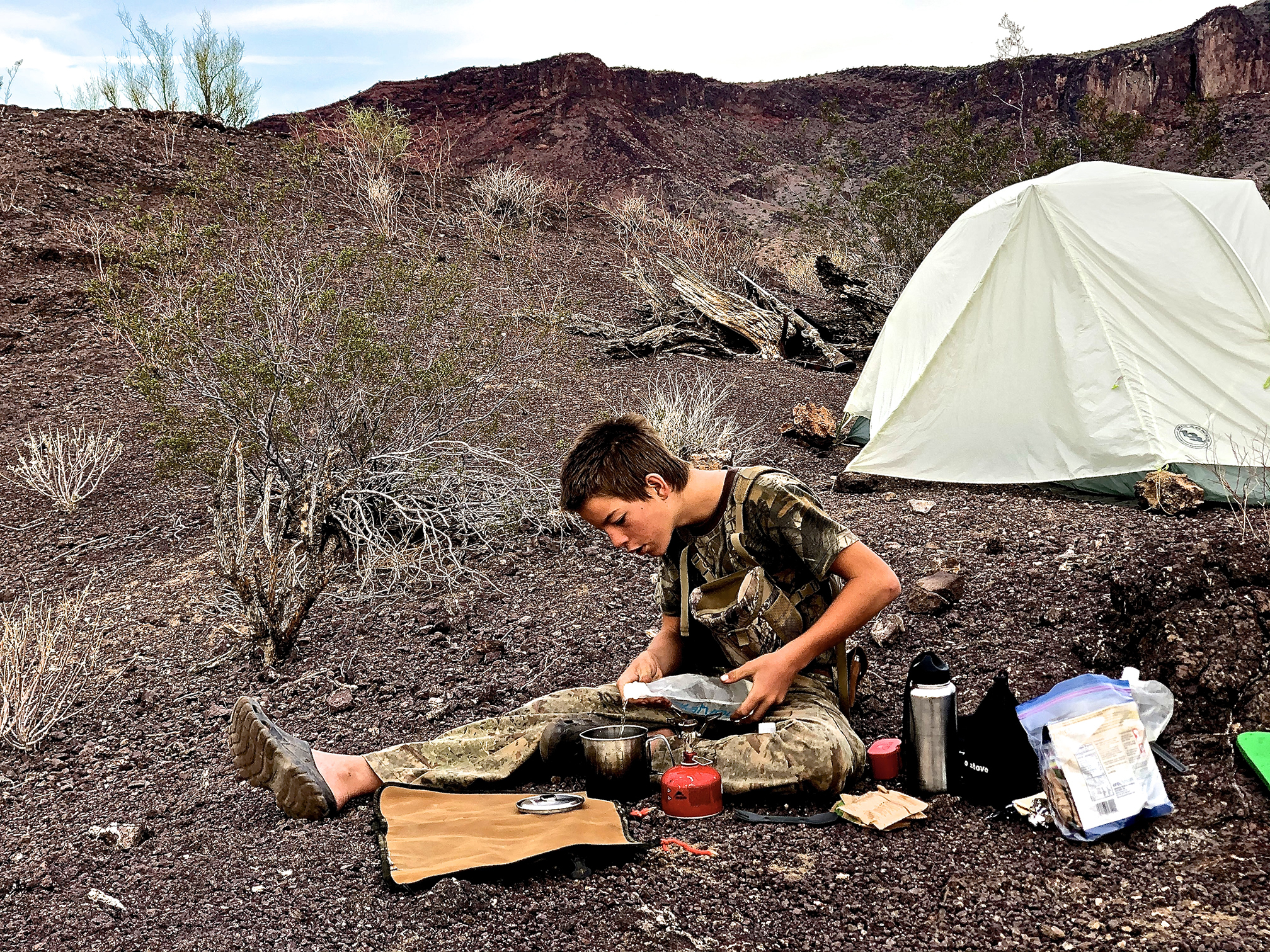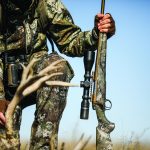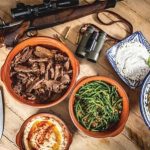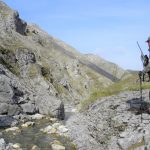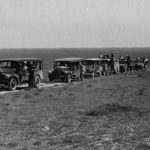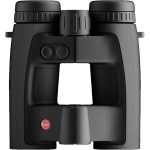What to eat and drink on a wilderness hunt.
“I got a fish!” I glanced up from my cooking fire in time to see my eight-year-old son running toward me, a willow fishing pole in one hand and a small high-elevation trout flapping in the other. “Can we cook it in bacon?” he asked.
“You bet! Go clean it and we’ll throw it in the pan with the rest.” He did so, and a few minutes later we hunkered hungrily over the fire, salivating and watching our breakfast sizzle in the pan.
Eating well in the backcountry can pose a real challenge, especially if you are living off what you can carry in your backpack. Weight is the biggest issue, closely followed by bulk; it’s hard to carry enough sustenance for five to ten days in the wilderness. You must plan and pack strategically when heading for backcountry territory where a quick run to the supermarket is completely out of the question.
Breakfast in the backcountry isn’t the time or place for a leisurely meal – it should be simple and fast. A couple packages of instant oatmeal eaten right from their envelopes with a bit of water (hot or cold) poured in, a granola or breakfast bar, and a handful of trail mix or dried fruit will go down fast and offer an early morning boost of energy to get you going. A cup of instant coffee or hot chocolate is quick and easy to make, and will warm you nicely when temps are cold.
When you’re hunting and climbing hard– especially with a heavy pack on your back–you need to consume a lot of calories and protein. To that end, carry nutritious foods like jerky, dried fruit, chocolate, trail mix, and salted nuts for your lunch. If you can accommodate the weight, a pack of tuna wrapped in a tortilla makes an awesome lunch, especially if you get the ranch-flavored tuna. If you love peanut butter, you can use that inside the tortilla instead of tuna. A couple of Clif or ProBar energy bars will round out your lunchtime repertoire. I like to graze on these foods all day long while I hunt, hike, and glass.
Freeze-dried dinners have changed the way we dine in the outback. They’re lightweight and compact and easy to prepare. Best yet, they’re nutritious. Carry one freeze-dried meal to eat each evening. You’ll go to bed with a belly full of warm food, which will set you up with energy and stamina for the following day.
All that said, some of my favorite backcountry food is stuff I forage while there. I carry a small roll of fishing line, a couple hooks and a lure or two, and catch fish from small streams. They are delicious cooked over an open fire, especially if you have a bit of bacon to fry them in. If you don’t have a frying pan you can cook them on their backs in some coals. Any kind of meat you harvest while hunting will taste wonderful when skewered on a green stick and roasted over a smoky fire. Carry a tiny container of salt in your pack to add flavor. And keep your eyes out for edible greens, mushrooms, raspberries, blueberries, and such. Just be sure you can identify whatever berries or mushrooms you eat so you don’t consume anything toxic.
Cooking in the backcountry can be really fun. Problem is, while you’re hunting you must be fast and efficient. To that end I always carry a Pocket Rocket stove, a superb lightweight unit that can heat two cups of water to boiling in about 90 seconds. With one you can heat water for Mountain House dinners, morning oatmeal, and perhaps a hot beverage. If you get chilled during a daytime hunt you can stop for a few minutes and quickly brew up some tea or hot chocolate to drink. These superlight stoves run on compact Isobutane canisters. I find that one 8-ounce canister will usually last me three days. Depending on how long you plan to stay in the backcountry, you may need several. A lightweight titanium or stainless steel pot and a “spork” will round out your cook set.
Another way I commonly cook when in remote territory is over a small campfire. With a small pot, I can easily boil water for my food and beverages, roast skewered meat, or fry fish in the coals. If I expect fish to be a significant part of my diet I’ll bring a lightweight frying pan; it’s worth carrying the extra weight in trade for the extra protein I can gather right from a local stream. And a campfire can really help to warm you and dry clothing if weather conditions are bad. Check the regulations for the area you are hunting to be sure open fires are permitted.
Pure Water
Years ago, while scouting a high desert mesa for mule deer, I got thirsty. So thirsty I couldn’t even spit. My canteens were all empty, my mouth felt like it was full of cotton, and I craved water with intensity that I never imagined possible. Fortunately, I was able to find water and purify it, thereby surviving to write this article. Don’t ever let yourself get to that point. Always know where your next water is coming from, and always have a method of purifying that water.
When you’re scouting unfamiliar territory like I was, it can sometimes be hard to know where you will find water. If that’s the case, follow this rule: Always reserve enough water to get you back to your last known water source. If you use up all your water (except for this reserve) and haven’t located another source, it’s time to turn back and re-supply your canteens. If you don’t, you could end up dead. That sounds dramatic, but it’s a real thing. If you get badly dehydrated you can plummet rapidly into a deadly tailspin. First, you’ll feel thirsty. Then you’ll begin to get disoriented and irrationally thirsty. This is a dangerous stage, because clear thinking and solid decisions are critical to your survival. If you don’t get water you will start hallucinating, and if the weather’s hot you’ll suffer heat stroke. Eventually you will die. The happy ending to this dismal diatribe is that if you simply carry enough water and remain cognizant of your next resupply source, you are in no danger.
Fortunately, throughout much of the backcountry regions we hunt, water is readily available. You can fill your canteen at your convenience from any number of sources. Where water becomes critical is when hunting dry, arid areas like America’s desert southwest. In these regions it is imperative that you carry sufficient water to keep yourself hydrated for either the duration of your hunt, or until you can resupply at a local water source. When backpacking this can require careful planning because water is heavy, rendering it impossible to carry more than two or three day’s worth of water.
I have two favorite water carrying devices. The first is a one-liter stainless steel canteen by Klean Kanteen. With it I can carry water, but I can also boil water to purify it, or for a hot meal or beverage. (Just remember to remove the plastic lid before placing your canteen in the coals.) The second is a Platypus water bag. I like these because they are quiet (no sloshing), they fold into nothing when empty, and they are very tough. I carry several.
There are three primary methods for purifying water. The most popular and versatile is a quality lightweight filter pump. These filter out all the water-born nasties, including heavy metal contaminants. The downside to a pump is that it’s heavy, and can be aggravatingly slow to use.
The next method employs a purifying agent such as iodine or chlorine to purify your water. These tablets or drops are very compact and weigh almost nothing, which is a real advantage. The downside? It takes 20 to 30 minutes for the agent to purify your water, (time can pass excruciatingly slowly if you are very thirsty) and they do not remove anything from the water, such as metal or chemical contaminants. If you are collecting water from an old mine shaft, this is probably not the best method.
Lastly, you can boil water to purify it. A few seconds at a good rolling boil will kill all the nasty stuff in the water. Again, however, this method won’t remove metals and chemicals. If I have a campfire I often will use this method of purifying my water, simply because it’s convenient to fill a pot and set it on the coals and forget about it till it boils. Then remove it from the fire, and once it cools pour it into your canteen.
Some of the most satisfying drinks I have ever had came directly from springs, the water flowing crystal clear and icy cold. These are perfectly safe water sources, and there’s no need to purify water gathered from such a source. Just fill your canteen and drink up.
However, if the water ebbs from underground along an intermittent waterway, purify it. Probably it has gathered some unsavory passengers along its in-and-out downstream travel. Likewise, water from lakes, ponds, and streams should always be purified.

